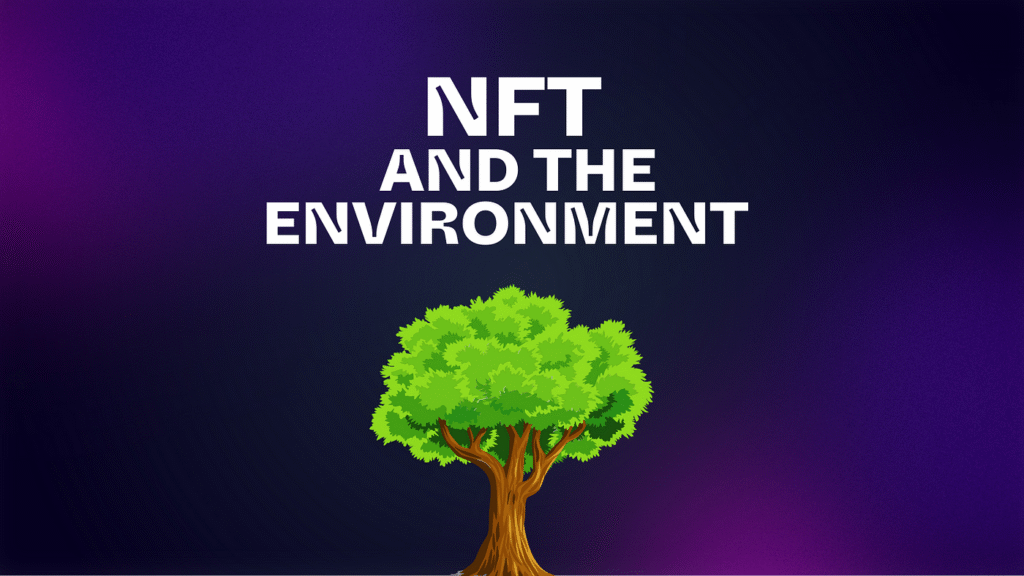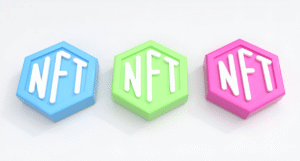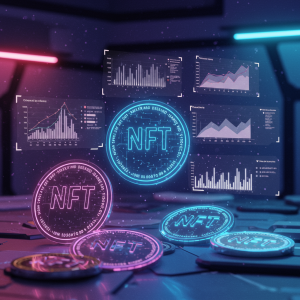NFT Environmental Credentials: The Rise of Proof-of-Sustainability in Digital Collecting

The NFT world is experiencing a profound transformation. As digital collectibles captured mainstream attention, so did concerns about their environmental footprint. This has sparked a remarkable evolution—one where ecological responsibility is becoming as valuable as the digital assets themselves.
The Environmental Challenge of Traditional NFTs
Early NFT enthusiasm quickly encountered a sobering reality. The energy consumption of popular blockchain networks raised serious questions about sustainability. A single NFT transaction on certain networks could consume as much electricity as an average household uses in several days.
This environmental contradiction became impossible to ignore. How could digital art celebrating nature exist on platforms potentially harming that same environment? The disconnect threatened to undermine the long-term viability of the entire NFT ecosystem.
The energy-intensive “proof-of-work” validation mechanisms behind major blockchains became the focal point of criticism. Artists, collectors, and platforms alike began searching for solutions that preserved the benefits of NFTs while addressing their ecological impact.
The Emergence of Green NFT Solutions
The market responded with remarkable innovation. New approaches emerged that dramatically reduced the environmental footprint of digital collecting while maintaining the core benefits of blockchain authenticity.
Layer-2 solutions allowed multiple transactions to be bundled together, spreading the energy cost across numerous NFTs rather than each bearing the full environmental burden. This seemingly simple innovation reduced energy requirements by orders of magnitude in many cases.
Simultaneously, entirely new blockchain protocols built on “proof-of-stake” validation gained traction. These alternatives consume a fraction of the energy required by traditional systems while providing comparable security and immutability benefits.
Specialized NFT platforms focusing exclusively on environmental sustainability entered the market. These platforms often incorporate automatic carbon offset purchases, renewable energy investments, or donations to environmental causes directly into their business models.
Proof-of-Sustainability: A New Standard Emerges
Beyond infrastructure improvements, a new concept gained prominence in the NFT world: proof-of-sustainability. This approach goes beyond merely reducing harm to actively demonstrating ecological credentials.
Learn more about emerging digital asset standards at digitalvibevault.com
Proof-of-sustainability takes multiple forms in today’s NFT landscape:
Carbon-negative collections offset more emissions than they produce by purchasing verified carbon credits exceeding their footprints.
Transparent energy audits provide collectors with detailed information about the ecological impact of their digital assets.
Environmental impact certificates accompany NFTs, documenting their creation methods, energy sources, and overall sustainability profile.
Community governance systems allow stakeholders to vote on environmental initiatives funded through NFT sales and transaction fees.
These approaches transform sustainability from a mere marketing claim into a verifiable attribute of the digital asset itself.
Market Demand Driving The Shift
The movement toward NFT environmental credentials isn’t simply altruistic—it’s responding to clear market signals. Collectors increasingly factor sustainability into their purchasing decisions.
Major brands entering the NFT space recognize that environmental controversies can damage their broader reputations. This has accelerated the adoption of sustainable practices even among purely commercial projects.
Celebrity artists with environmental concerns have driven change by refusing to mint NFTs on platforms without strong ecological commitments. Their public stances have educated broader audiences about sustainability issues in blockchain technology.
Investment funds focusing on digital assets have established sustainability criteria, directing capital toward projects with robust environmental credentials. This financial incentive is reshaping development priorities across the ecosystem.
Real-World Implementation Successes
Several promising approaches demonstrate how NFT environmental credentials work in practice.
One notable collection utilizes a unique system that rewards holders for verifiable environmental actions. Collectors earn badges by participating in clean-up events, reducing personal carbon footprints, or supporting conservation initiatives.
Another platform has pioneered a “regenerative NFT” model where each transaction generates funds for reforestation projects. The platform maintains blockchain verification of trees planted, creating a transparent link between digital assets and physical environmental benefits.
Artist collectives have established sustainability certification programs that evaluate and rank NFT platforms based on comprehensive environmental criteria. These independent assessments help collectors make informed choices about where to participate in the digital art economy.
Technology Enabling Verification
Blockchain’s inherent transparency makes it uniquely suited for verifying environmental claims. The same technology powering NFTs can document their ecological impacts.
Smart contracts automatically trigger sustainability actions when NFTs change hands. These might include carbon offset purchases, renewable energy certificate acquisitions, or donations to environmental organizations.
Decentralized oracle networks connect real-world environmental data to blockchain records, allowing for independent verification of sustainability claims without requiring trust in any single authority.
Some platforms incorporate physical environmental sensors that feed data directly to their blockchain, creating tamper-proof records of ecological conditions related to the NFT’s creation or ongoing impact.
Challenges in Standardization
Despite significant progress, the NFT environmental credentials space still faces important challenges. The lack of universally accepted standards makes comparing sustainability claims difficult for average collectors.
Some “greenwashing” persists, with vague environmental claims lacking specific metrics or verification. Distinguishing meaningful ecological commitments from marketing language remains challenging.
Cross-chain compatibility of environmental credentials presents technical hurdles. As collectors build portfolios across multiple blockchain ecosystems, unified sustainability tracking becomes increasingly complex.
Industry working groups are addressing these challenges through proposed standardization frameworks, though reaching consensus among diverse stakeholders takes time.
The Collector Experience
For digital art enthusiasts, environmental credentials are becoming an integral part of the collecting experience. Many now expect sustainability information to be as accessible as creator details or ownership history.
User interfaces have evolved to prominently display ecological impact metrics alongside traditional NFT attributes. Some platforms use intuitive visual cues like sustainability ratings or eco-badges to communicate environmental performance at a glance.
Community spaces devoted to sustainable collecting have emerged, where enthusiasts share information about environmentally responsible platforms and artists. These communities often establish their own, sometimes rigorous, standards for what qualifies as truly sustainable.
Educational resources help newcomers understand the environmental implications of different blockchain technologies, empowering them to make informed decisions about their digital collecting activities.
The Future of NFT Sustainability
The trajectory suggests environmental credentials will become increasingly sophisticated and integral to NFT ecosystem. Several developments appear likely in coming years:
Dynamic sustainability metrics that update in real-time based on changing network conditions and energy sources used by blockchain validators.
Interoperable environmental standards allowing sustainability credentials to be recognized and valued across different platforms and blockchain networks.
Gamification of positive environmental impact, where collectors earn recognition or additional benefits by choosing sustainable options.
Integration with broader environmental accounting systems, potentially linking digital collecting activity to national or international climate commitments.
Conclusion
The rise of NFT environmental credentials represents more than just a response to criticism—it signals a fundamental maturation of the digital collecting ecosystem. By embracing proof-of-sustainability, the NFT world is developing solutions that could influence environmental practices far beyond blockchain technology.
For collectors, creators, and platforms alike, sustainability is evolving from a peripheral concern to a core attribute of digital assets. This shift not only addresses legitimate ecological issues but also enhances the long-term cultural and financial value of NFTs themselves.
As the space continues evolving, environmental credentials may ultimately become as fundamental to NFTs as the digital signatures that verify their authenticity. In this emerging landscape, proof-of-sustainability isn’t merely an optional feature—it’s becoming an essential component of responsible digital collecting.








